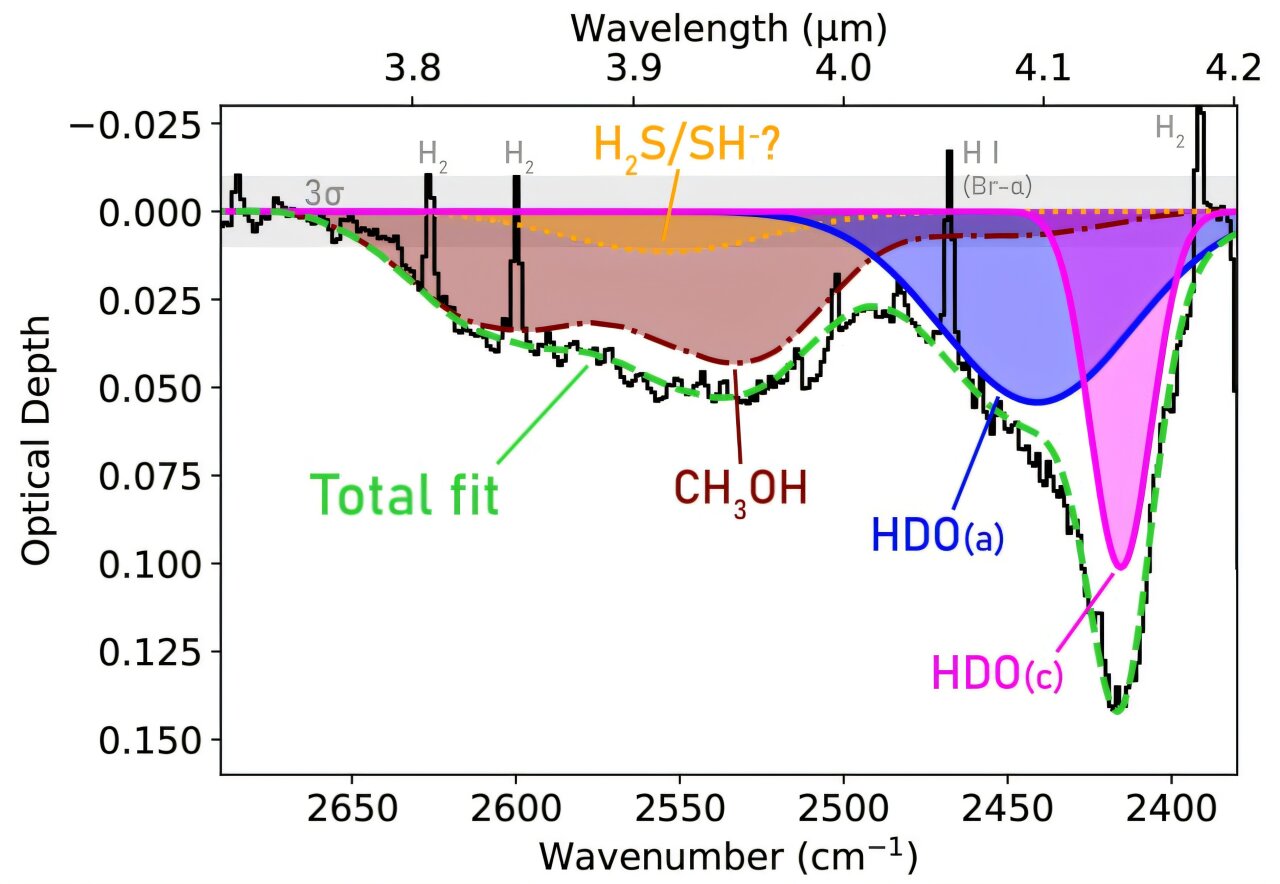Water in the Solar System formed before our sun and the planets
A team led by astronomers at Leiden University in the Netherlands and the National Radio Astronomy Observatory in Virginia (U.S.) have, for the first time, robustly detected 1 semi-heavy water ice around a young sunlike star. The results strengthen the case that some of the water in our solar system formed before our sun and the planets.

One way that astronomers trace the origin of water is through measuring its deuteration ratio. That is the fraction of water that contains one deuterium atom instead of one of the hydrogens. So instead of H2O, it’s HDO, which is also called semi-heavy water. A high fraction of semi-heavy water is a sign that the water formed in a very cold place, such as the primitive dark clouds of dust, ice, and gas from which stars are born.

In our oceans and in comets and on icy moons, as many as one out of a few thousand water molecules consists of semi-heavy water. This is about 10 times higher than expected based on the composition of our sun. Therefore, astronomers hypothesize that some of the water in our solar system originated as ice in dark clouds, hundreds of thousands of years before the birth of our sun. To confirm this hypothesis, they must measure the deuteration ratio of water ice in such star-forming regions.
The astronomers have now detected such a high ratio of semi-heavy water ice in a protostellar envelope, which is the cloud of material that surrounds a star in its embryonic stages.

Beautifully clear signature
The team used the James Webb Space Telescope for their study. Before its launch, the water deuteration ratio in star-forming regions could only be reliably measured in the gas phase, where it can be chemically altered. “Now, with the unprecedented sensitivity of Webb, we observe a beautifully clear semi-heavy water ice signature toward a protostar,” says Katie Slavicinska, a Ph.D. student from Leiden University (Netherlands) who led the study.
The protostar in question is L1527 IRS, located in the constellation of Taurus, about 460 light-years from Earth. “In several ways, it is similar to what we think our sun was when it began to form,” says John Tobin, from the National Radio Astronomy Observatory in Virginia (U.S.), who leads one of the Webb programs responsible for the observations.
The L1527 water deuteration ratio is very similar to the ratio of some comets as well as the protoplanetary disk of a more evolved young star, which suggests similar cold and ancient chemical origins of the water found in all of these objects.
“This finding adds to the mounting evidence that the bulk of water ice makes its journey largely unchanged from the earliest to the latest stages of star formation,” says co-author Ewine van Dishoeck, a professor of astronomy at Leiden University who has spent much of her career tracing the journey of water through space.
References
- Katerina Slavicinska et al (2025) HDO Ice Detected toward an Isolated Low-mass Protostar with JWST The Astrophysical Journal Letters doi: 10.3847/2041-8213/addb45 ↩